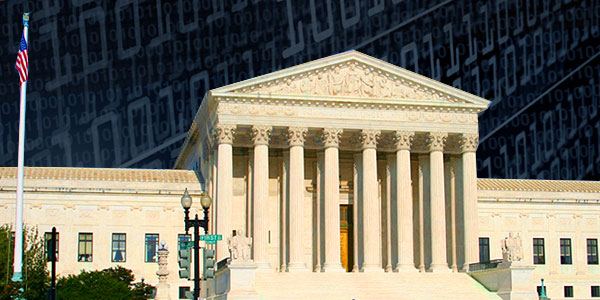The U.S. Supreme Court on Monday agreed to hear an appeal from Samsung regarding its patent dispute with Apple.
The case stems from a 2011 lawsuit by Apple that alleged Samsung copied certain design elements and features from the iPhone and iPad and used them in Samsung Galaxy phones and tablet computers.
A jury in 2012 awarded US$1 billion to Apple, finding that Samsung had used some of Apple’s tap-to-zoom technology. The award was later reduced.
The companies reached a partial agreement in December under whichSamsung agreed to pay Apple $548 million. Samsung insisted at the time that it reserved the right to seek a partial refund, called the award to Apple excessive, and denied that it actually infringed the patents.
Arguments Limited to Scope
The high court will listen only to arguments over the scope of the award, not to arguments Samsung made about some of the larger questions concerning patent law.
“We welcome the court’s decision to hear our case. We thank the many large technology companies, 37 intellectual property professors and several groups representing small businesses, which have supported our position,” said Samsung spokesperson Danielle Meister Cohen.
“The court’s review of this case can lead to a fair interpretation of patent law that will support creativity and reward innovation,” she told E-Commerce Times.
Stifling Innovation
“We hope the Supreme Court’s agreement to hear this important case will result in design patent law finally getting some much needed oversight and an infusion of common sense,” said Ed Black, CEO of theComputer & Communications Industry Association, which in January filed an amicus brief urging the high court to take up the issue.
“These laws were written to protect the central design of products like carpets — not the outer case of tech gadgets. Misinterpretation and overreach in patent law could have a chilling effect on innovation — the opposite intention of the patent system when it was created,” he said.
The lower court misinterpreted a statute by expanding a patent on ornamental features of a smartphone to include all the innovations that make up a complicated device like a smartphone, according to the amicus brief. For example, Apple has 199 active patent designs called “electronic device,” and if Samsung were held liable for all of those, it could face the loss of billions of dollars.
The potential cost of infringing a single patent design in a case like this would make other smartphone manufacturers decide to stay out of the market to avoid liability, according to the filing.
Important Ruling
The ruling in this case, while limited to the question of damages, is critically important to the future of design patents in general, said Alexander Poltorak, CEO ofGeneral Patent.
“The last design patent case that the Supreme Court took up was in 1877,” Poltorak told the E-Commerce Times. The Supreme Court has “been very interested and active in looking at utility patent cases.”
The scope of design patent damages law has been criticized as too broad, according to Christopher Rourk, a partner atJackson Walker.
“They’ve indicated they’re going to give us some guidance on that. Presumably that would be a relief granted on the relief granted to Apple. But in any event, it’s anyone’s guess how they will actually rule,” he told the E-Commerce Times.
“Generally the U.S. Supreme Court does not understand patent technology, so rulings are not very predictable,” said Peter S. Vogel, a partner atGardere.
“Most complex technology disputes are confusing to the Supreme Court, and this will be no exception,” he told the E-Commerce Times. “The main reason is that justices on the Supreme Court are not trained in computer and patent technology, and freely admit they don’t understanding texting and emails, so can one expect any more?”
Virtually every award is being reduced on appeal, General Patent’s Poltorak said. The case that may provide guidance on the outcome of this is Georgia Pacific v. United States Plywood, which set the modern standard over patent disputes.













































Social Media
See all Social Media